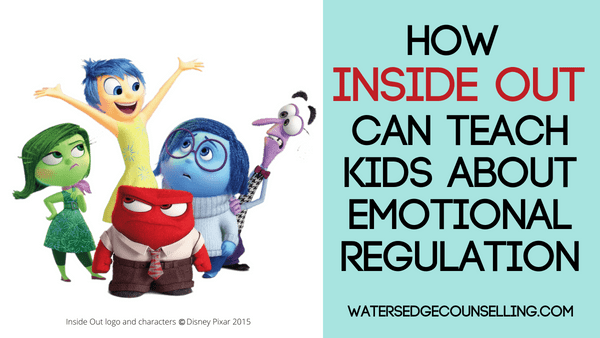
People of all ages love the Disney Pixar film Inside Out. We can all relate to Riley, the idealistic child on the brink of puberty who is feeling LOTS of things! And by showing different emotions as characters in her head – emotions which work together, get frustrated or become confused, kids are given a better idea of the complexities of our feelings.
We often use Inside Out characters is counselling sessions with children, because they illustrate how we are feeling so vividly. And while some kids can easily pick out what “happy” and “sad” is, others have a tougher time finding words for their emotions. That is why we often pair Inside Out Character with a framework called the Zones of Regulation. In the Zones, different colours are used to show us how our mood stabilises and heightens, all the way from blue (sad or lethargic) to red (chaotic and Intense).
Here are where the Inside Out characters are placed in the Zones of Regulation. Next time your child can’t tell you why they are acting out, consider asking them which Inside Out character they feel like today. Then to return to green zone (or where the character of Joy exists), try using breathing exercises, physical activity, fiddle toys or drawing
Blue Zone:
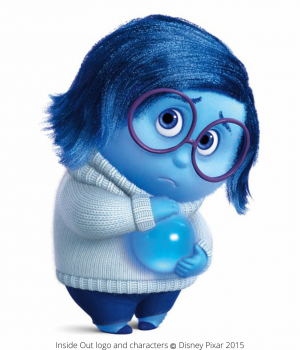 The zone that characterises sadness, depression, lethargy or general feelings of yuckiness. In Inside Out, this is depicted by, you guessed it – Sadness. Sadness is known for plodding along, crying over the smallest things, and generally bringing every other emotion down. However, as the movie goes on, we realise that Sadness plays an essential role in Riley’s health. She helps her grieve and be empathetic. When Sadness has control over all of a Riley’s emotions, Riley experiences depression. But when she is allowed to coexist and isn’t suppressed, Sadness finds her place – and it’s in helping Riley be a well rounded, complex and intuitive human.
The zone that characterises sadness, depression, lethargy or general feelings of yuckiness. In Inside Out, this is depicted by, you guessed it – Sadness. Sadness is known for plodding along, crying over the smallest things, and generally bringing every other emotion down. However, as the movie goes on, we realise that Sadness plays an essential role in Riley’s health. She helps her grieve and be empathetic. When Sadness has control over all of a Riley’s emotions, Riley experiences depression. But when she is allowed to coexist and isn’t suppressed, Sadness finds her place – and it’s in helping Riley be a well rounded, complex and intuitive human.
Green Zone:
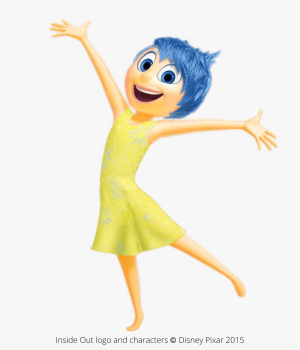 The zone of general contentment, safety and wellness. When we teach kids about the zones, green is a base line for health. We don’t always stay in Green Zone, but we can process our emotions to eventually return there and feel calm.
The zone of general contentment, safety and wellness. When we teach kids about the zones, green is a base line for health. We don’t always stay in Green Zone, but we can process our emotions to eventually return there and feel calm.
In Inside Out, this is characterised by Joy. Joy is the cheerful and optimistic leader of emotions, and highlights what a state of mental wellness looks like. In the film, Joy thinks that the only way for Riley to live her happiest life is to suppress Sadness. But at the end of the film, they realise they are better working together. In the same way. It’s not healthy to always be in green zone or always be ‘happy’ (that’s impossible), but by accepting the full range of our emotions we can reach a level of peace and stability.
Yellow Zone
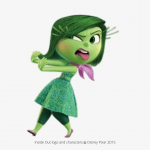
The zone where kids start to get a bit wiggly, unsettled, and the adrenaline starts pumping. Caregivers will often recognise this as the zone right before their kids have a melt down or go wild.
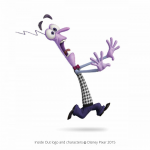
In Inside Out, we meet two emotions in the Yellow Zone (showing just how big and uncontrollable these feelings can seem!). Disgust is a sassy, bold and bossy character who can change the tone of a room with her attitude. She is disgusted by many things – smells, sounds and textures, but also anything that may embarrass or offend Riley. On the brink of teenagerhood, Disgust demands be to heard! Oh the other hand, Fear is a worrisome, somewhat feeble character who is phobic about everything. Fear relies on the strength and guidance of the other characters so Riley can remain healthy – however he is first one to put Riley into action when she may be threatened, and without him she would be lost!
Red Zone
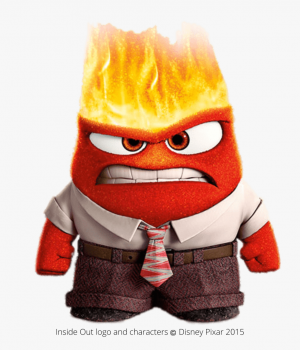
A zone of extreme emotions, many children identify this as the times they feel out of control: a huge anxiety attack, running away, tantrums, violence, outbursts or euphoria – they all exist in the Red Zone.
We see this characterised in Inside Out by Anger – the (literal) hot headed emotion who is triggered by the slightest thing. When anger has full reign, he causes chaos and steamrolls every other emotion. Yet he plays a fundamental part in Riley’s health, making sure she advocates for herself, for others, and that she does what is right. Anger is healthiest when paired with other emotions – and by recognising the anxiety, disgust or sadness triggering its response, a child can go down the scale of emotions and return to green so they can be calm and regulated.
Does your child struggle to understand their emotions? Our children’s specialist Rachel can give them the tools to process their feelings and grow. Here’s what you need to do: Contact Colleen on 0434 337 245 for a FREE 10 minute consultation on how we can best help you or book online now.
Leave a Reply